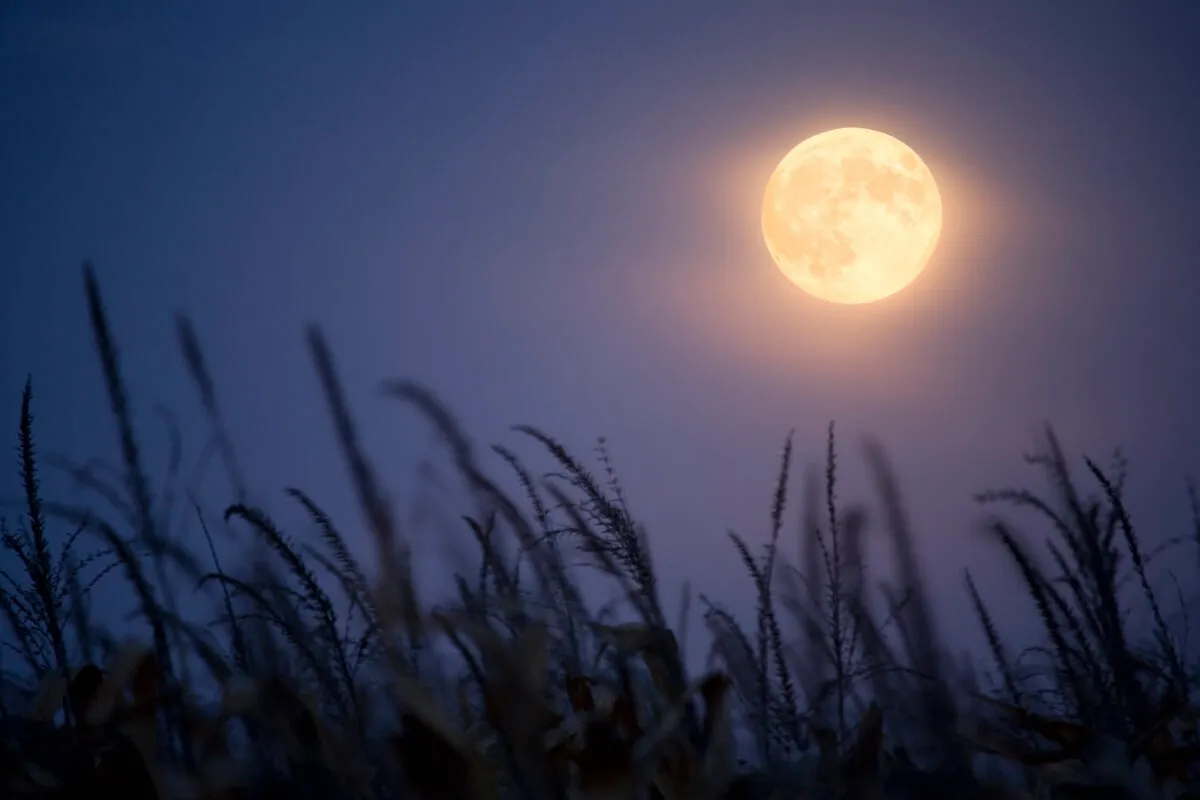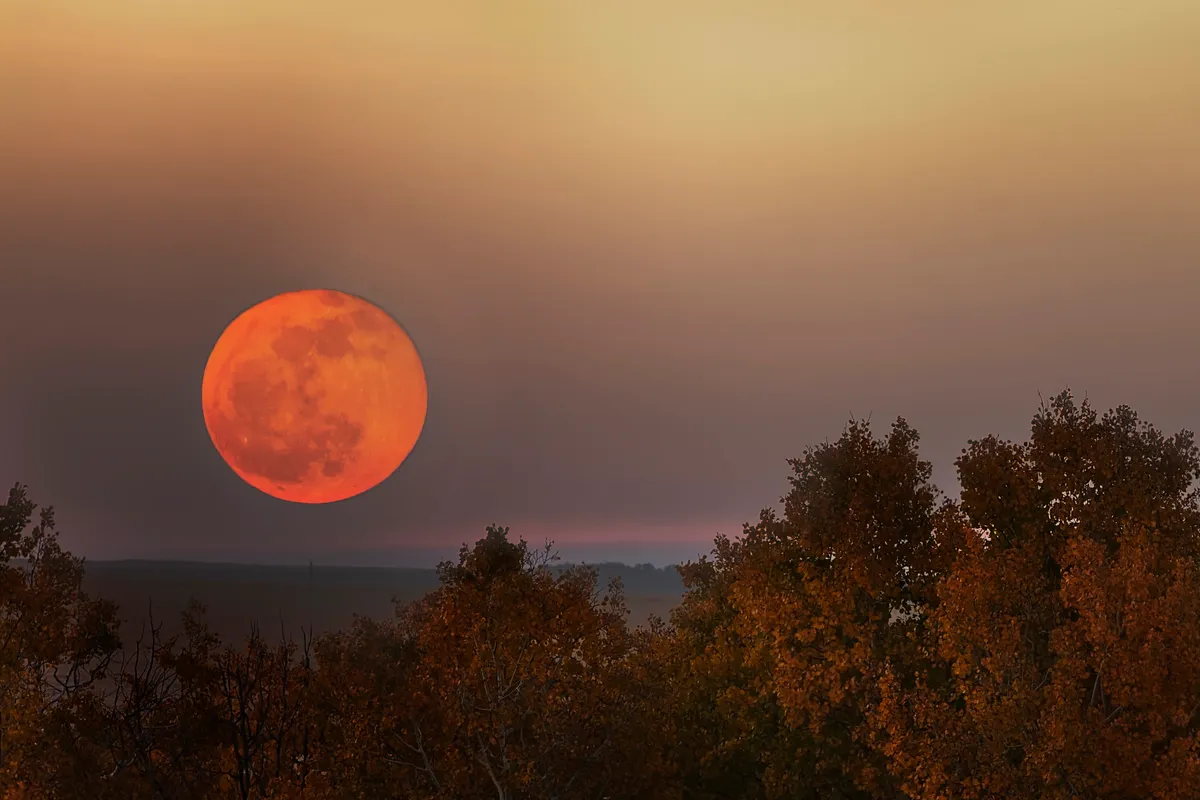Harvest Moon is the name given to the full Moon closest in date to the first day of autumn, known as the autumn equinox.
The autumn equinox is when day and night are the same length.
In 2025, the Harvest Moon will rise on 7th October at 18:20 BST, and will also be a supermoon, the first of three supermoons to close out the year.

The last Harvest Moon occurred on 18 September 2024, and it was a Harvest Moon, supermoon and partial lunar eclipse. You can see images of the Super Harvest Moon eclipse here.
It was also the second of 4 supermoons in a row at the end of 2024.
The 2023 Harvest Moon occurred on 29 September 2023.
In this guide we'll explore how to see the Harvest Moon, heralding the return of autumn.
If you want to capture the event, read our guide on how to photograph the Harvest Moon.

Origins of the name
A Harvest Moon’s proximity to the September equinox means that the rise times for the near-to-full lunar phases are nearly the same on the days before and after.
As a result, the difference in rise times of the full Moon from one evening to the next after this date is the smallest for the year.
This means the bright, fuller lunar phases appear at approximately similar times, reliably lighting the way to collect the harvest.
Indeed, it was the abundance of bright early-evening moonlight on those consecutive days that traditionally lit the fields for collecting the crops.
Measure the Harvest Moon

Waiting for the fuller phases of the Moon to rise is a great way to experience the visual effect of the Moon illusion.
This well-known optical effect makes these phases appear enormous when close to the horizon.
You can also observe the next full Moon after the Harvest Moon and you should see a similar pattern in rise times for its fuller phases.
The period close to the March equinox represents the opposite situation, with the difference between successive moonrises for the fuller phases of the Moon being the largest of the year.
A good experiment during the Harvest Moon is to make a note of the rise times from the date of the full Moon onwards and calculate the difference.
You can find this easily via our Moon phases poster (PDF), which you can download and keep on your phone or tablet for quick checking.
Try to remember to do this next March too, when the difference is greatest.

Is it bigger?
Some believe the Harvest Moon is much bigger or brighter than other full Moons in the year. This isn’t true.
This belief may have come about due to a complex optical illusion that makes the Moon look bigger when it’s lower down near the horizon.
It may appear bigger during a 'supermoon', which is when our natural satellite is closest to Earth in it's orbit, but not every Harvest Moon is a supermoon.

What makes the Harvest Moon special
One of the reasons the Harvest Moon is so unique is because the Moon rises at virtually the same time every night during the evenings around the full Moon.
The average rise time difference of Moons throughout the year is 50 minutes.
Yet moonrise for the 97%-lit waxing gibbous Moon on 5 October is 18:03 BST (17:03 UT).
On 6 October, when the Moon is virtually full, it rises just 10 minutes later at 18:13 BST (17:13 UT).
Then on the evening of 7 October, it rises 12 minutes later at 18:25 BST (17:25 UT).
True to its name, these bright Moons rise at roughly the same time over the course of several evenings, making them perfect for harvest collection.
Observing tips

Around the time of year that the Harvest Moon appears, the Sun goes down almost due west, so the full Moon will be rising near to due east.
As it rises, see if it has a wonderful ochre red colour, especially when it’s low on the horizon.
This is an effect of the lunar light being filtered, as it travels through more of the Earth’s atmosphere than when it’s overhead.
Since red light is scattered least by the Earth’s atmosphere, the Moon takes on this lovely red colour.
You may have heard news of a recent study that found the Moon is rusting, but this isn't why it appears orange.
Find out more about this in our guide on why the Moon sometimes looks orange.
The lower and less built-up your horizon, the better your chance of seeing the Harvest Moon rising in all of its glory.
It's a fantastic sight that heralds the start of autumn.
If you manage to capture an amazing image of the Moon, don't forget to send us your images or share them with us via Facebook, Twitter and Instagram.

